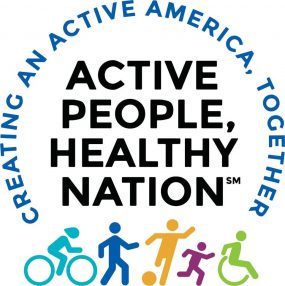Real-World Examples
Here are several real-world examples of approaches to increasing physical activity through community design. These examples illustrate how US communities have linked activity-friendly routes with everyday destinations.
Examples range from very simple, small-scale, low-cost built environment changes to more complex, large-scale, resource-intensive changes spanning entire communities. In the chart, the green arrow to the left depicts this range to offer every community ideas for approaches according to their setting, budget, and scale of work.
See more real-world examples below the chart.

| Activity-Friendly Routes | Everyday Destinations | ||||||||
|---|---|---|---|---|---|---|---|---|---|
| Real-World Example | Street Pattern Design and Connectivity | Pedestrian Infrastructure | Bicycle Infrastructure | Public Transit Infrastructure and Access | Mixed Land Use | Increased Residential Density | Proximity to Community Destinations | Parks and Rec Facility Access | |
| The city of El Paso, TX created a walking route between the Union Plaza District and the Downtown Arts District. These destinations of cultural and economic activity were previously divided by a locked parking lot that prohibited public and pedestrian access. | |||||||||
| A neighborhood in St. Louis, MO reduced average vehicle speed by using traffic calming techniques in a busy area served by four bus stops. This improved access to buses during the day, which connected residents to community destinations. | |||||||||
| In Weslaco, TX, students, school officials, and the city public works department partnered to paint a new crosswalk to connect the school to the community and the surrounding neighborhood. | |||||||||
| In Los Angeles, CA, the Watts neighborhood designed a visitor’s center at the train station in a historic building along with a network of walking paths with public art to promote pedestrian traffic between the metrorail public transit stop and cultural sites. | |||||||||
| With the mayor, more than 100 community volunteers in Cuba, NM constructed or improved 9.5 miles of trails with landscaping including shade trees, benches, parking areas, and signage. Each trail attracts different users—two trails connect the village to the Santa Fe National Forest. | |||||||||
| The city of Hernando, MS obtained grant funding to revitalize an old road connecting the middle and high schools that had been blocked off for years. This new pathway opened a safe route to school and allows more residents to use a newly surfaced track. | |||||||||
| In Atlanta, GA, the BeltLine is converting abandoned railway into a combination of trails, parks, light rail transit, high-density residential buildings, and commercial development. Expected to eventually cover 22 miles of pathway, the BeltLine will connect 45 neighborhoods and Atlanta’s council districts. | |||||||||
| To improve public access to the waterfront in Houghton, MI, this remote city in the Upper Peninsula gradually acquired a stretch of shoreline property and replaced industrial ruins with parks, marinas, and paved bicycle/pedestrian trails which now connect the city center to parks and residential districts. | |||||||||
Tailored Transit Options Get People Moving in Florida [PDF-1.76MB]
Florida is expanding public transportation with the goals of reducing traffic-related crashes and fatalities, increasing physical activity, and improving overall health and wellness. A key to its success has been serving the diverse needs of different populations, from millennials to seniors, by creating a multimodal menu of transportation options and resources.
Complete Streets Help Communities Build Safe Spaces for Physical Activity in Kansas
By August 2016, 15 counties in Kansas had policies to improve physical activity access across the state.
Streets Become Safer through Traffic Calming Demonstrations in St. Louis, Missouri
A partnership between nonprofit and community organizations, community members, and the city of St. Louis led to traffic-calming demonstration projects in four neighborhoods, affecting more than 12,000 people.
Park Updates Promote Physical Activity for Tribal Nation
The newly restored Chief Niwopet Park encourages physical activity with a walking trail, an obstacle course, and other new structures that feature Menominee art, language, and history.


